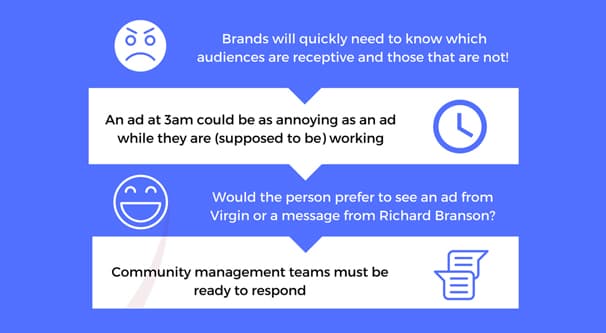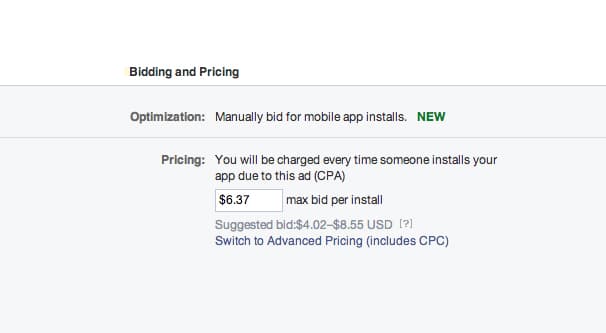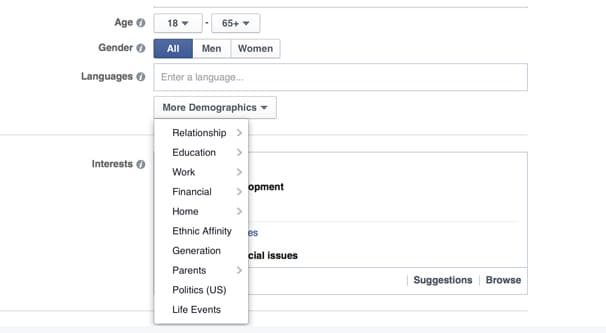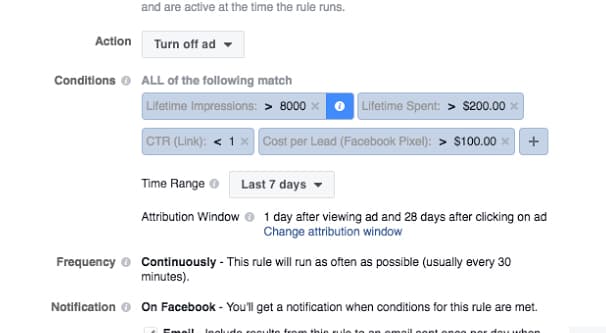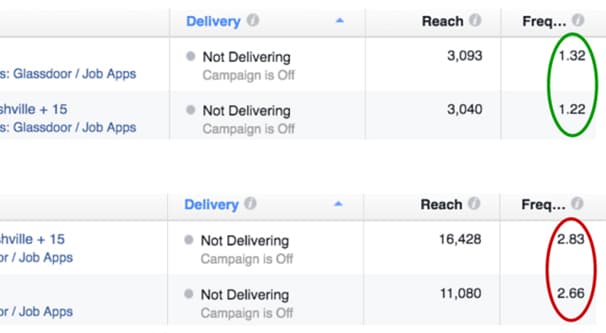 Written by ContentPowered.com
Written by ContentPowered.com![]()
CPA ads on Facebook can be an excellent way to get sustainable traffic to your business, though as with any ad, you need to rotate them occasionally to maintain freshness. Being a wizard with CPA ads makes you an invaluable asset to your business, too. How, then, can you successfully create and manage a CPA campaign?
First up, let’s talk about some important aspects of Facebook ads in general and CPA ads in specific.
Facebook Ads are Disruptive
The first thing you need to understand is that Facebook ads are fundamentally disruptive to your target audience. We’re not talking about disruptive in the way something like Lyft is disrupting the taxi industry, here. It’s not a good thing.
Think about Google ads for a moment. When an ad shows up in the Google search results, it’s generally on topic and relevant to the interests of the user. They’re looking for information or a product, the ad connects them to that information or product, and it’s all copacetic. It’s not a disruption.
People use Facebook for a different reason. Maybe they want to play games, chat with their friends, or connect with family and read about how everyone’s lives are going. An ad gets in the way of that.
The average Facebook user will tolerate a certain amount of disruption as is inherent in the system. A few ads, a few shared clickbait posts, a few posts from that uncle no one really likes but they all tolerate because he’s old and friendless, you know how it goes.
When you recognize that Facebook ads are a disruption in the flow of a Facebook feed, you begin to understand the hurdles you need to jump in order to make people feel like clicking on them. With a cost per action ad, that means you need to make taking that action a more compelling prospect than simply scrolling past your ad.
Understanding Your Audience
In order to create CPA ads that are minimally disruptive – and that have a big enough incentive to overcome the disruption – you need to understand your audience. You need empathy with their situation, so you need to know their situation. Who are they? What are they interested in? What can you provide to them to overcome the fact that you’re sliding into their personal lives asking for a favor?
Some of this can be done using information you have from other kinds of marketing, from customer profiles, and from research you’ve done into your existing customers. Some of this comes from experimentation, changing up your ad targeting until something clicks. Some of it comes from refining existing ads, to reach the people who are most frequently converting, and people like those people.
The Star Metric: Frequency
It’s well known that Facebook hides posts. Those who aren’t aware of Facebook’s algorithms and their filtering will share those copy-paste posts about “click my profile and leave a comment” or “click the arrow and click see more” to try to get their friends to see more of their posts. You know, the sort of through-the-grapevine rumors based in some fact six generations distant.
Those who are more aware of how Facebook works know that Facebook filters a ton of posts from every feed to make those feeds usable. If every post was displayed unfiltered, the average user would see nearly 10x as many posts as they do today.
Where does ad frequency come in here?
Ad frequency is a metric measuring how often the average user in your audience sees your ad. Let’s say you have a target audience of 100 people. If 50 people see your ad, you have an ad frequency of .5. If all 100 people see your ad exactly once, you have a frequency of 1. If everyone in your audience sees your ad four times, you have a frequency of 4.
It’s not exact, though. If your audience of 100 people has 50 of those people see your ad twice each, you’ll still have a frequency of 1 even though half your audience hasn’t even seen your ad. Still, once the numbers get large enough, it’s a good enough estimate.
Ad frequency is important in the context of Facebook filtering. A higher ad frequency means individuals in your audience are seeing your ad multiple times. If your frequency grows too high, you’ll often find that your CPA costs skyrocket.
Why is that? Well, it means your users have noticed they keep on seeing your ad. Those users who are generally aware that Facebook filters posts will recognize that these ads are taking the place of a post they might rather prefer to see.
Essentially, the disruption of your ad begins to outweigh the value you’re providing with it. The higher your frequency, the worse it will be for people who are sensitive to this kind of thing. You’ll not only see CPAs rise, you’ll see an increase in people reporting your ad as spam, blocking your page, or taking other negative actions.
So what’s the process for making a good CPA ad and refining it in a way that keeps your costs low and your conversions coming in?
Step 1: Lay the Groundwork
There’s a lot of work that needs to be done before you can even begin creating ads. As I mentioned above, you need to learn your audience. Do as much research as you can into your buyer personas, and if possible, split them up into specific audiences. Remember: a smaller, narrow, highly targeted audience is going to respond better than a broad, more general audience.
You also need to make sure to optimize as many of the surrounding elements as possible. Set up a high-converting landing page that closely matches your target audience personas and their interests. Make sure the landing page copy matches the copy of your prospective ads, too. Remember, congruence between ads and landing pages is an element of Facebook quality score. A higher quality will both reduce costs and boost exposure.
This also ties into the idea of disruptive ads up above. You want to make your ad as minimally disruptive as possible, while also providing the most compelling off you can provide. This means doing research into your customers to see what kinds of offers will drive them to take action. If you don’t know how your audience ticks, you can’t give them the offer they can’t refuse.
While you’re at it, make sure your Facebook page itself is robust. Post organically on a regular basis, keep engaging with the users who engage with you, and make sure you have as much information about your business readily available as possible.
Step 2: Create and Run Ads
If you’re at all experienced in creating Facebook ads, you already know basically how to do it. If not, Facebook will walk you through creating your first ad, or there are numerous resources giving you step by step walkthroughs of putting an ad together. I’m gong to mostly gloss over the beginner stuff to talk about how to effectively manage your ads.
First of all, keep your organizational structure set. Use ad campaigns to divide up different major campaigns for your ads. One for your spring collection, one for a new product launch, one for normal lead generation, that kind of thing. It’s easier to organize your ads if you keep campaigns divided by purpose.
Within each campaign, set up ad sets based on archetypes for ads. For our CPA ads here, we’ll want to create a couple of ad sets for each major variation of your ads. Let’s say one ad references a current meme, one is aimed at using video, and one is a traditional information-focused ad.
Within each ad set, you want to create individual ads with split tested attributes. Remember that the more attributes you change, the more variations you need to execute to get realistic data. If you have one ad with two different ad images, that’s two ads you need to run. If you have two different images and two different headlines, you need one for each combination, resulting in four ads. If you add in three different variations in targeting, you have 12 different ads you need to run. It can balloon incredibly easily, and those ads can overlap within your target audience, so be careful with excessive variations.
Step 3: Monitor Frequency and Performance
After you’ve run your ads for a while, you’ll rack up data in your ad analytics. Facebook will show you various metrics like your impressions, your clicks and actions taken, and your cost per action. You will also see your ad frequency. You need to balance all of your data.
If your ads have a very high cost per action, something is going wrong. It generally means that your users are either seeing your ads too frequently, or there’s some disconnect between your ad action and your conversion process. Look to see if there’s a significant point of friction in your landing page or conversion process that you may be able to smooth out.
Keep an eye on your ad frequency at all times. Data has shown that a frequency of 5 will nearly double your cost per action while decreasing your click rate by as much as 30%. A frequency of 9, with that same data, will drop your click rate by half and increase your costs by 161% or more.
If one ad variation in your ad set performs better, kill off the worse versions and iterate on the good version. This is the essence of split testing: incremental increases over time.
Remember that Facebook ads tend to be pretty short-lived. High frequencies are killer, and Facebook isn’t great at recording frequency for similar ads. Eventually, even your ad variants will drop off. At this point, it’s time to kill the ad set and start with something new.
Don’t forget to create an audience out of the people who convert. This audience can be used in future follow-up marketing, but it has a more immediate and more important purpose. Once someone has converted through your ads, remove them from your normal ad targeting pool. Use this “converted users” pool as a negative targeted audience. After all, there’s nothing worse than seeing an ad trying to get you to buy a product you already bought.
Step 4: Look for Common Problems
At this point, you’ll have found some ads that work, some that don’t, and some that should but somehow still fail to succeed. It’s that third group you want to dig deeper into.
Look for common problems that put a roadblock in between your customer and your conversion. Here are some ideas from what I’ve encountered in the past:
- Are you asking too much? Fairly often, I see marketers trying to get full conversions out of something with a huge buy-in. A high price, like an annual commitment, or asking for a ton of personal information for an opt-in form, can create a sizable roadblock.
- Has your ad gone stale? If your ad has been running relatively unchanged for more than a month, it’s probably quite stale, even if frequency is low. At the very least, change up your ad image rather dramatically.
- Is your offer obtuse? I’ve seen companies try to offer something like a minor discount on their products that, when you look at it from a user’s perspective, amounts to a $1 savings over a year. It’s really not worthwhile, even if you hide the actual value with obtuse language.
There’s a lot you can dig into with sales funnel optimization, pain point analysis, and smoothing. Identify issues, smooth them out, and iterate on your ads to take advantage of reaching as many people in your audience as possible.

